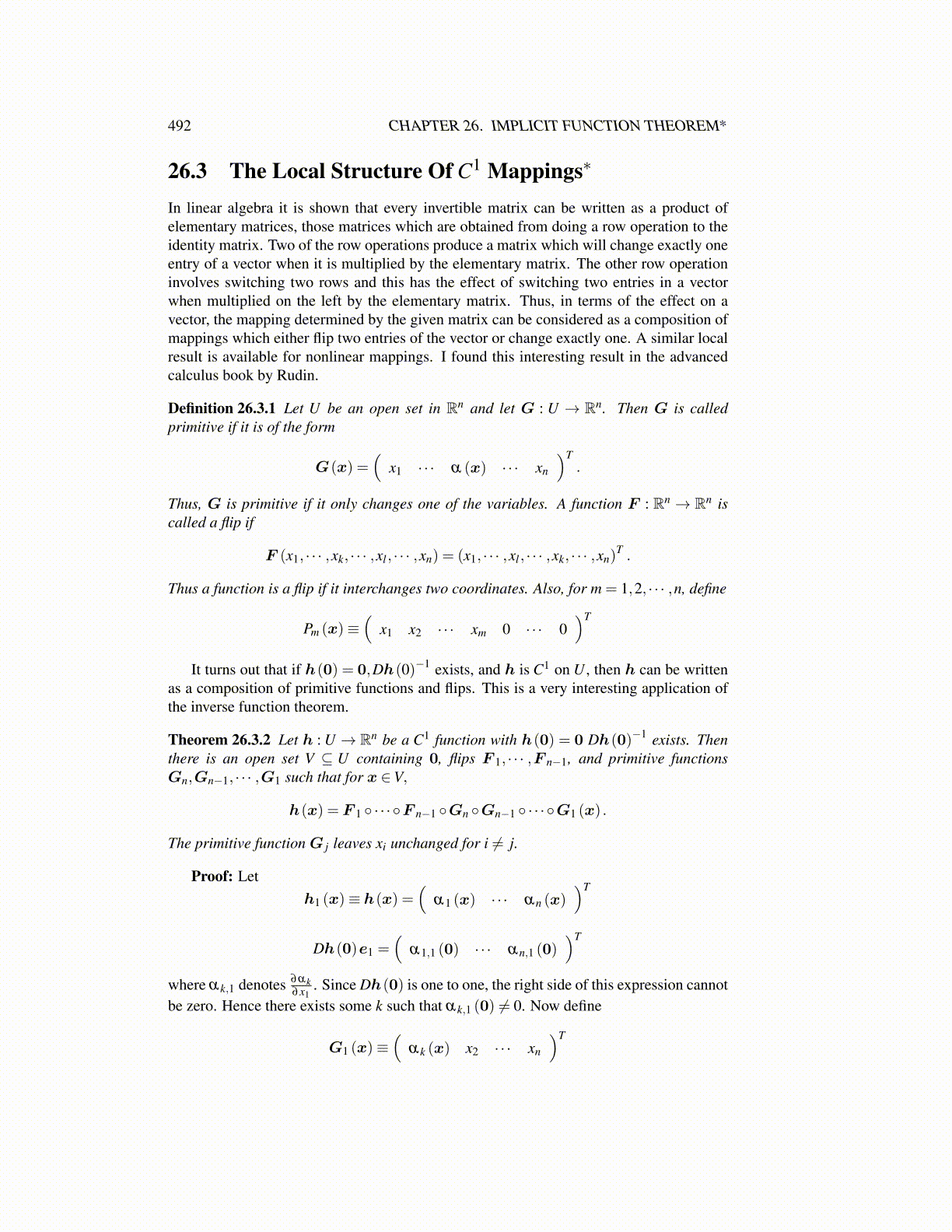
492 CHAPTER 26. IMPLICIT FUNCTION THEOREM*
26.3 The Local Structure Of C1 Mappings∗
In linear algebra it is shown that every invertible matrix can be written as a product ofelementary matrices, those matrices which are obtained from doing a row operation to theidentity matrix. Two of the row operations produce a matrix which will change exactly oneentry of a vector when it is multiplied by the elementary matrix. The other row operationinvolves switching two rows and this has the effect of switching two entries in a vectorwhen multiplied on the left by the elementary matrix. Thus, in terms of the effect on avector, the mapping determined by the given matrix can be considered as a composition ofmappings which either flip two entries of the vector or change exactly one. A similar localresult is available for nonlinear mappings. I found this interesting result in the advancedcalculus book by Rudin.
Definition 26.3.1 Let U be an open set in Rn and let G : U → Rn. Then G is calledprimitive if it is of the form
G(x) =(
x1 · · · α (x) · · · xn
)T.
Thus, G is primitive if it only changes one of the variables. A function F : Rn → Rn iscalled a flip if
F (x1, · · · ,xk, · · · ,xl , · · · ,xn) = (x1, · · · ,xl , · · · ,xk, · · · ,xn)T .
Thus a function is a flip if it interchanges two coordinates. Also, for m = 1,2, · · · ,n, define
Pm (x)≡(
x1 x2 · · · xm 0 · · · 0)T
It turns out that if h(0) = 0,Dh(0)−1 exists, and h is C1 on U , then h can be writtenas a composition of primitive functions and flips. This is a very interesting application ofthe inverse function theorem.
Theorem 26.3.2 Let h : U → Rn be a C1 function with h(0) = 0 Dh(0)−1 exists. Thenthere is an open set V ⊆ U containing 0, flips F 1, · · · ,F n−1, and primitive functionsGn,Gn−1, · · · ,G1 such that for x ∈V,
h(x) = F 1 ◦ · · · ◦F n−1 ◦Gn ◦Gn−1 ◦ · · · ◦G1 (x) .
The primitive function G j leaves xi unchanged for i ̸= j.
Proof: Leth1 (x)≡ h(x) =
(α1 (x) · · · αn (x)
)T
Dh(0)e1 =(
α1,1 (0) · · · αn,1 (0))T
where αk,1 denotes ∂αk∂x1
. Since Dh(0) is one to one, the right side of this expression cannotbe zero. Hence there exists some k such that αk,1 (0) ̸= 0. Now define
G1 (x)≡(
αk (x) x2 · · · xn
)T